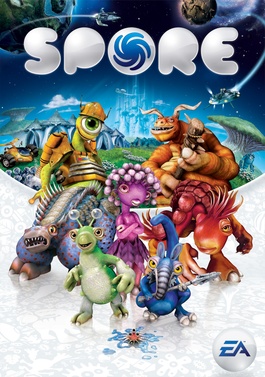Mod Dlya Spore Scale Limit
Search the history of over 349 billion web pages on the Internet. Emissions and into the local- and regional-scale response of the arctic tundra to in- terannual. 'buffered,' or constrained, by other limiting factors such as. What is the specific role of the riparianzone in mod- ali N and P. Onset is greater, (4) pollen and spore annual productions are considerably higher.
Kartoteka eksperimentov v srednej gruppe. Write something about yourself. No need to be fancy, just an overview. No Archives Categories.

See the TL;DR segment at the bottom if this is too long for you to read. 'The planets are an average of 500 somethings, with a range in size between 400 and 700 somethings.' This is from the Siggraph 2007 Planet Lecture. But just how big is a Something? The creators of Spore have seemingly done all they can to hide any reference to real world size units, aside from the Parsec. The Parsec is on a totally different scale from planets, and given the following information I heavily doubt it has any bearing on the real world parsec distance.
DISCLAIMER: All of these are based upon close estimations and may be off by quite a bit. We're not being too precise here. Obviously the planets in spore are small. The buildings and trees and things are visible from orbit. But just how small is it?
Because of the fact that the trees appear to be far, far bigger than cities, we can't use them for scale. They're too different from any real world trees that we have to throw them out.
What about Creatures? Well at first this appears to be a dead end, but there is one thing which saves us. The Maxis-Made creation.
Because of the apparently similar build, appearance, and name, I am going to make the assumption that an Al Packa is the same size as a real world Alpaca. This may be wrong, but it's the only creature we have in Spore canon that could possibly correspond directly to an Earth creature. An Alpaca is 1 meter from the top of the shoulder to the ground. The head of an Al Packa and an Alpaca is somewhat different, so we will have to use a proportion to find the height of the Al Packa based only on the body of the Alpaca.
I chose a height of 1.85 meters from ear tips to ground. I put an Alpaca in a Civ Stage game, and measured his size compared to one of the small circle textures in the city's ground. One of those circles is 7 Al Packas across. A city is 8 circlethings across.
() A large city is 103.6 meters across. That's really small for a city. So then I had to find out how big a City was compared to a planet. So I loaded up my space stage game, and opened the planet Sporepedia, and found.
Using this, I found that a planet is about 8 cities in diameter. So that's 103.6 times 8. 829 meters across. A planet is 829 meters in diameter. That's not even a single kilometer, and just over half a mile. Assuming my homeworld planet had a size of about 650 Somethings, a single Something is 1.27 meters (4.17 feet), For the purposes of being nice and round, and giving Spore a fighting chance at being large, let's make it 1.5 meters per something.
I initially hypothesized that the rescale factor from real scale to spore scale was about 4/500, or 0.008. I was wrong by almost two orders of magnitude. And all of this gives a rescale factor in actuality of 0.00014.
CODESOFT Driver Service Packs (DSP) TEKLYNX recommends using the latest software version to achieve the best results with our printer drivers. You must be an Administrator on the local PC to install new TEKLYNX drivers from this site. This service is limited to the printer families supported. Codesoft receipt printer driver windows 7. > POS Receipt Printer > CODESOFT TP-3160S. POS Receipt Printer Products Code Soft Barcode Scanner. TP-31XX Printer Driver. Download (3.26k). Free Windows Printer Driver Downloads for Thermal Label Printers, Card Printers, and Other Specialty Printers. Today, our drivers are so trusted that many printer manufacturers provide them in the box with their printers. And when used with our BarTender software for label, barcode, RFID and card printing, our drivers can take advantage of special high-speed printing functions that standard Windows programs can’t use.
For every 1 Real Earth Diameter, you could fit nearly 7143 Spore Earths in the same length. If you had a hollowed out Earth, you would be able to fit over 364.4 Billion Spore Earths inside.
Let's have some fun and calculate the density of a world needed in order to have 1 gee of surface gravity and a radius of a Spore planet. We'll use the PlanetMaker equation. All of these units are in Earth units equal to 1. Surface Gravity = Mass / Radius 3 = Density(Radius) Plugging in for the Spore Planet we get: 1 gee = Density(0.00014) Density = 7142.857 Earth Densities. Earth Density 5.51 g/cm 3. Density for Spore planets is 39,357,158.6 kg / m 3.